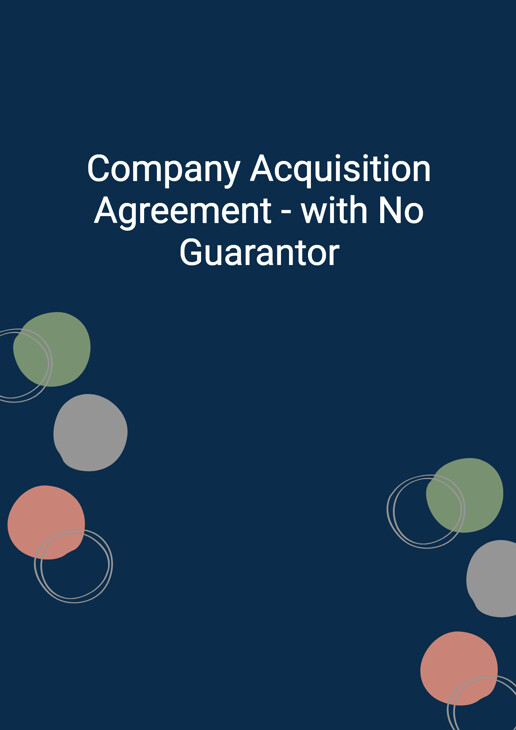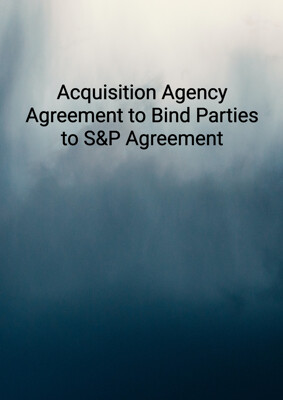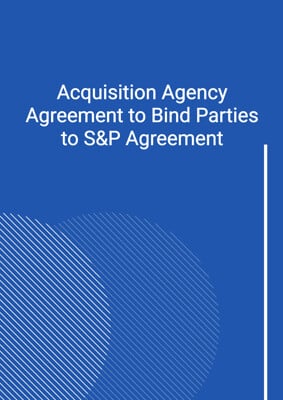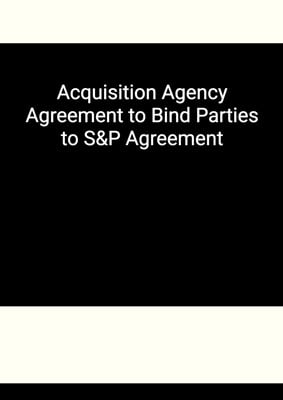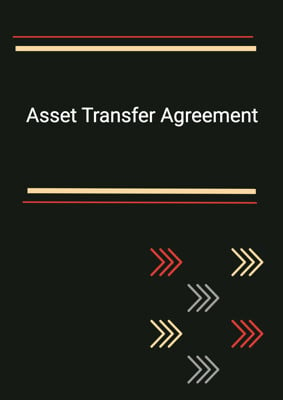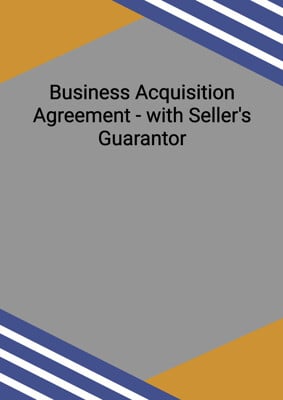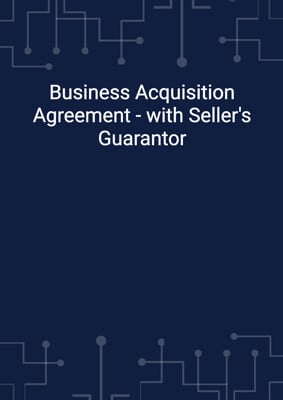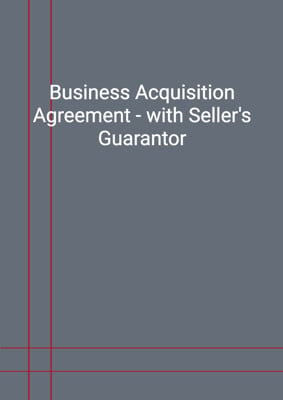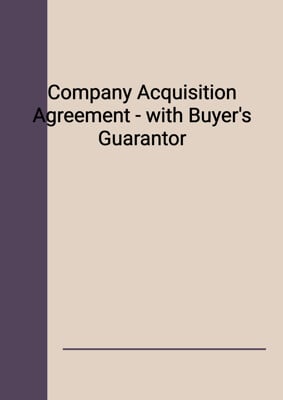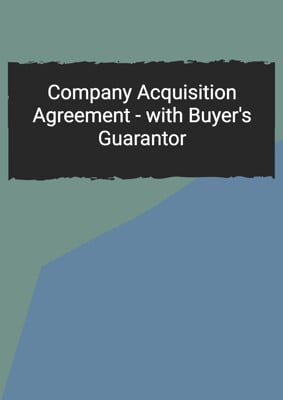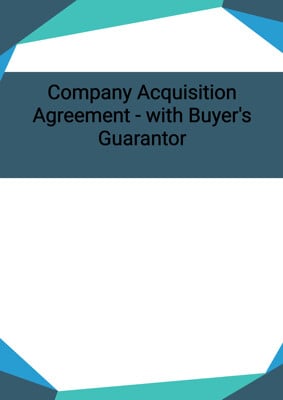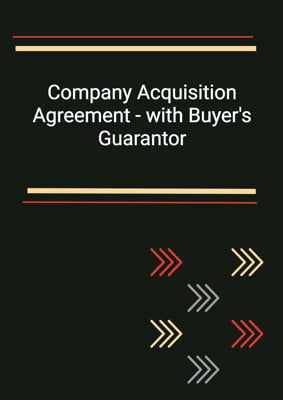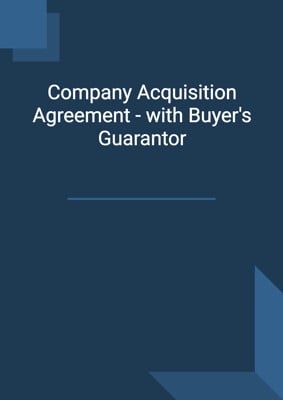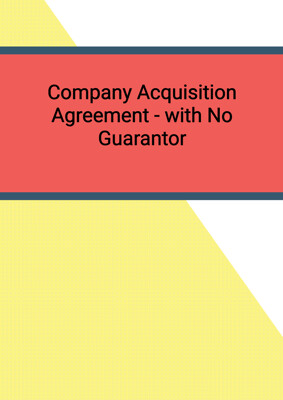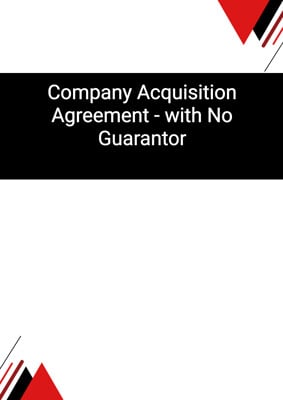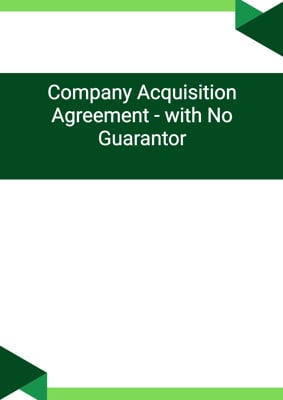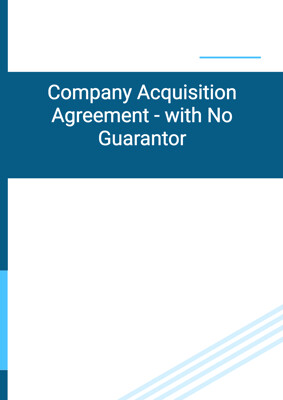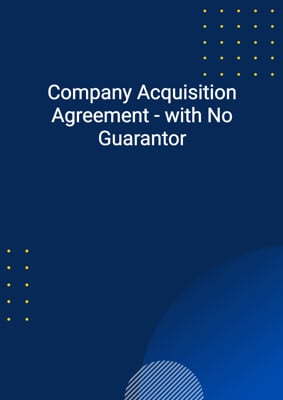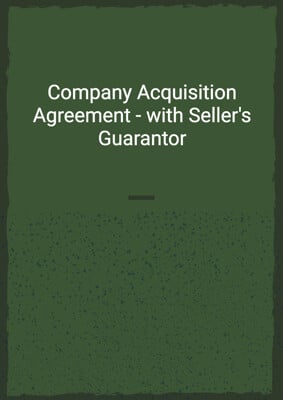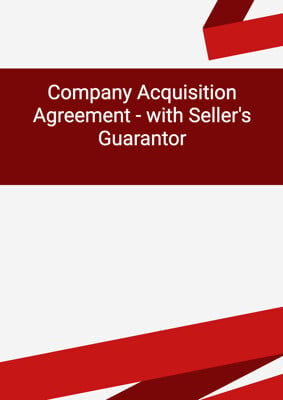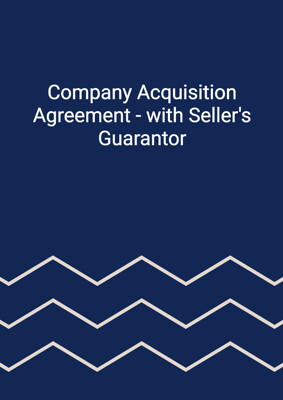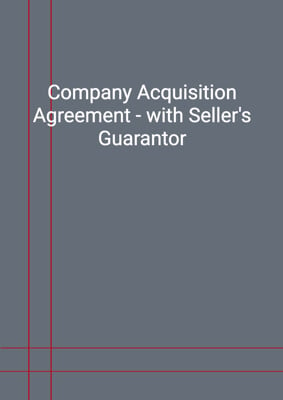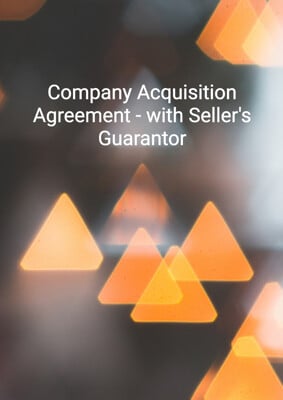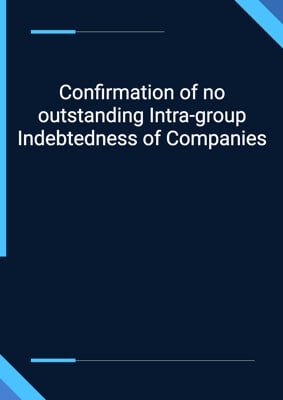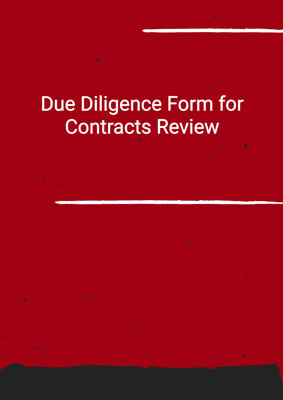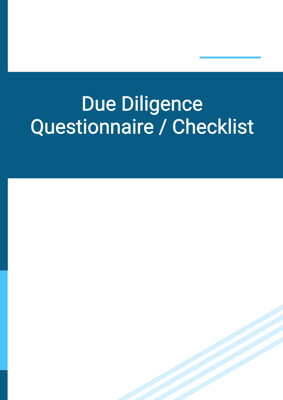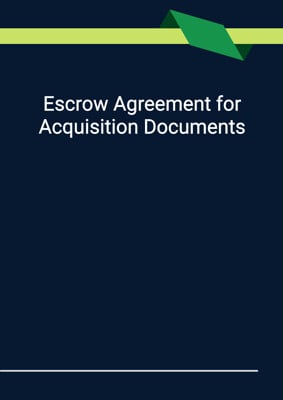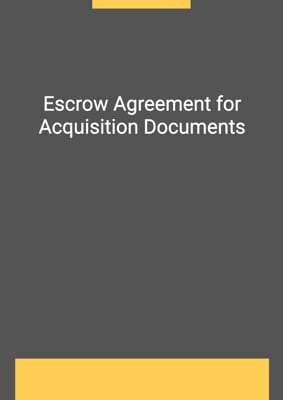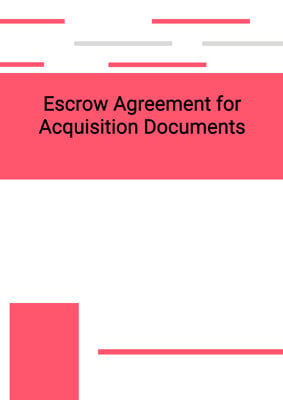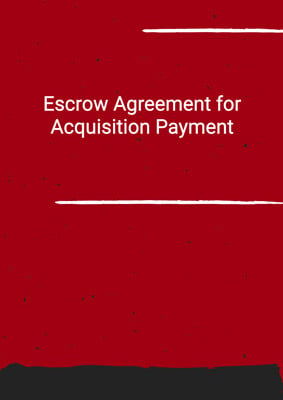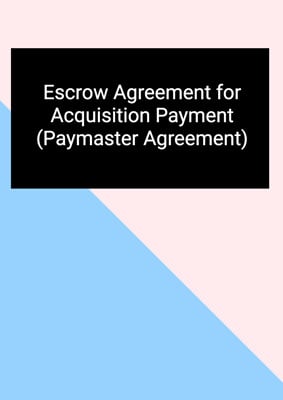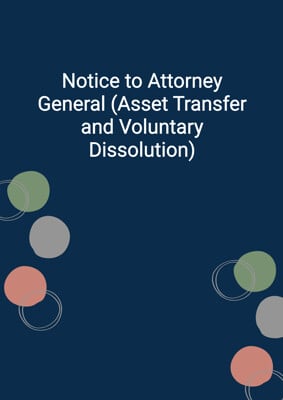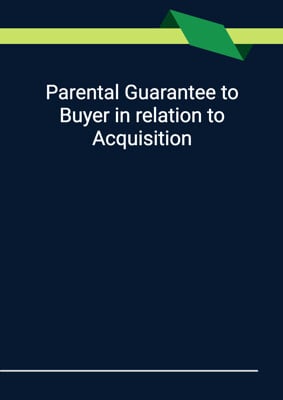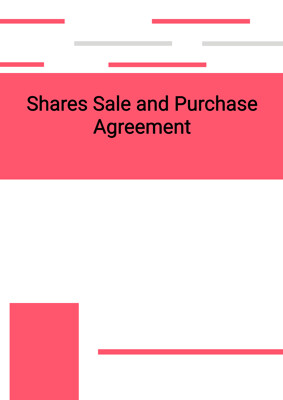How to Tailor the Document for Your Need?
01
Create Document
Fill in the details of the parties. You can click the "Fill with Member’s Information" button to complete it with information saved to your account.
02
Fill Information
Please fill in any additional information by following the step-by-step guide on the left hand side of the preview document and click the "Next" button.
03
Get Document
When you are done, click the "Get Document" button and you can download the document in Word or PDF format.
04
Review Document
Please get all parties to review the document carefully and make any final modifications to ensure that the details are correct before signing the document.
Document Preview
Document Description
The Company Acquisition Agreement - with No Guarantor is a legal document that outlines the terms and conditions of the acquisition of a company. The agreement is entered into between the sellers and the buyer, where the sellers are the legal and beneficial owners of the share capital of the company, and the buyer agrees to purchase all of the issued share capital of the company.
The agreement begins with an interpretation section, which defines the key terms used throughout the document. It also includes schedules that provide additional information, such as the details of the company and its subsidiaries, the maximum liability under warranties and indemnity, the warranties themselves, the pension scheme of the company, the completion accounts, and the articles of association.
The sale of the shares and the price are specified in section 2 of the agreement. Each seller agrees to sell, and the buyer agrees to purchase, the number of shares set opposite that seller's name. The total price payable by the buyer to the sellers for the shares is determined based on the agreed consideration, which can be a fixed amount paid in cash, a fixed amount paid in shares, or a fixed amount for goodwill and business intellectual property rights (IPR), plus the book value of the tangible assets.
Section 3 of the agreement outlines the conditions to completion, which must be fulfilled before the sale and purchase of the shares can be completed. These conditions include the passing of a resolution by the shareholders of the buyer, the delivery of written consents from certain persons, the repayment of outstanding intra-group indebtedness, and other specified conditions.
Section 4 of the agreement covers pre-completion undertakings, which are obligations that the sellers must fulfill before completion. These include allowing the buyer's representatives access to the books and records of each group company, conducting the business of each group company in the usual course, preserving and protecting the business assets, and not taking any actions inconsistent with the provisions of the agreement.
Section 5 of the agreement deals with completion, which is the final step in the sale and purchase of the shares. It specifies the location and timing of completion and outlines the documents and transfers that must be delivered by the sellers to the buyer on completion. It also addresses the payment of the price by the buyer and the notification of fulfillment of the conditions.
Section 6 of the agreement covers completion accounts, which are prepared after completion to determine the value of the net tangible assets. The completion accounts are prepared in accordance with specific accounting policies and procedures set out in the agreement. If there is a dispute regarding the completion accounts, an independent firm of accountants may be appointed to determine the adjustments required.
Section 7 of the agreement outlines post-completion undertakings, which are obligations that the buyer undertakes to fulfill after completion. These include the repayment of connected trading indebtedness, obtaining the release of connected guarantees, and ceasing to use certain trade or service marks.
Sections 8 and 9 of the agreement contain warranties provided by the buyer and the sellers, respectively. These warranties represent the representations and assurances made by each party regarding the accuracy and completeness of the information provided and the absence of any undisclosed liabilities or claims.
Section 10 of the agreement sets out the limitations on claims, including the time limits for making claims and the maximum liability of the sellers under the warranties. It also specifies the circumstances under which the limitations on claims do not apply.
Section 11 of the agreement grants the sellers the right to terminate the agreement if certain events occur before completion, such as a breach of the agreement or a material adverse effect on the business or financial position of the group.
Section 12 of the agreement addresses withholding tax and grossing up, which require the buyer to pay all sums payable under the agreement free and clear of any deductions or withholdings, unless required by law. If any tax is imposed on the payments, the buyer must pay an additional amount to ensure that the net amount received by the payee is equal to the full amount that would have been payable without the tax.
Section 13 of the agreement states that the agreement and the disclosure letter set out the entire agreement between the parties and supersede any prior agreements or arrangements. It also includes provisions regarding misrepresentation, liability, and indemnification.
Section 14 of the agreement allows for variations to the agreement, provided they are in writing and signed by all parties. It also specifies that any variation does not constitute a waiver of any provisions of the agreement and does not affect any rights, obligations, or liabilities that have already accrued.
Section 15 of the agreement addresses assignment, allowing the buyer to assign the benefit of the agreement to other members of its group or to banks or financial institutions providing financing for the acquisition. It also allows for the assignment of the benefit of the agreement by the buyer's assignees to other members of the buyer's group.
Section 16 of the agreement covers announcements, requiring the parties to obtain each other's approval before making any announcements or disclosures regarding the agreement. It also allows for consultation between the parties regarding the form, content, and timing of any announcements or disclosures.
Section 17 of the agreement deals with costs, specifying that each party is responsible for its own costs incurred in connection with the agreement, except for stamp duty and other transfer taxes, which are borne by the buyer.
Section 18 of the agreement contains a severability clause, stating that if any provision of the agreement is held to be invalid or unenforceable, it will be deemed not to be included in the agreement, but the remaining provisions will remain in full force and effect.
Section 19 of the agreement states that counterparts of the agreement may be executed, with each counterpart being an original but together constituting one instrument.
Section 20 of the agreement requires the parties to perform all further acts and execute all further documents necessary to implement and give effect to the agreement.
Section 21 of the agreement addresses waivers, stating that no failure or delay by the buyer in exercising any right or remedy shall impair such right or remedy or operate as a waiver. It also specifies that the buyer's rights and remedies are cumulative and not affected by completion, investigations, or the expiry of limitation periods.
Section 22 of the agreement states that the agreement does not confer any rights on third parties to enforce its terms.
Section 23 of the agreement specifies the governing law and jurisdiction, stating that any disputes arising from the agreement shall be subject to the jurisdiction of the courts.
Section 24 of the agreement covers notices and service, specifying the methods and timing of serving notices between the parties. It also allows for changes to the addresses or contact details by giving written notice.
Section 25 of the agreement states that time is of the essence in relation to the times, dates, and periods mentioned in the agreement.
The agreement concludes with the signatures of the duly authorized representatives of the parties.
How to use this document?
1. Review the entire Company Acquisition Agreement - with No Guarantor to understand the terms and conditions of the acquisition.
2. Familiarize yourself with the interpretation section and the schedules, as they provide important definitions and additional information.
3. Pay close attention to section 2, which outlines the sale of the shares and the price. Understand the agreed consideration and the payment terms.
4. Review the conditions to completion in section 3 and ensure that they are fulfilled before proceeding with the sale and purchase of the shares.
5. Understand the pre-completion undertakings in section 4 and ensure that the sellers fulfill their obligations before completion.
6. Follow the steps outlined in section 5 to complete the sale and purchase of the shares. Make sure all necessary documents and transfers are delivered on completion.
7. Familiarize yourself with the completion accounts in section 6 and understand the process for preparing and finalizing them. Seek professional advice if there are any disputes or disagreements.
8. Be aware of the post-completion undertakings in section 7 and ensure that the buyer fulfills its obligations after completion.
9. Review the warranties provided by the buyer and the sellers in sections 8 and 9. Understand the representations and assurances made by each party.
10. Familiarize yourself with the limitations on claims in section 10 and be aware of the time limits and maximum liability under the warranties.
11. Understand the sellers' right to terminate the agreement in section 11 and be aware of the circumstances that may lead to termination.
12. Consider the withholding tax and grossing up provisions in section 12 and ensure that all payments are made in accordance with the applicable tax laws.
13. Review the entire agreement and ensure that you understand the entire document, including the provisions regarding announcements, costs, severability, and waivers.
14. Seek legal advice if you have any questions or concerns about the agreement or its implications.
15. Keep a copy of the signed agreement and any related documents for future reference and record-keeping purposes.
Not the right document?
Don’t worry, we have thousands of documents for you to choose from:
